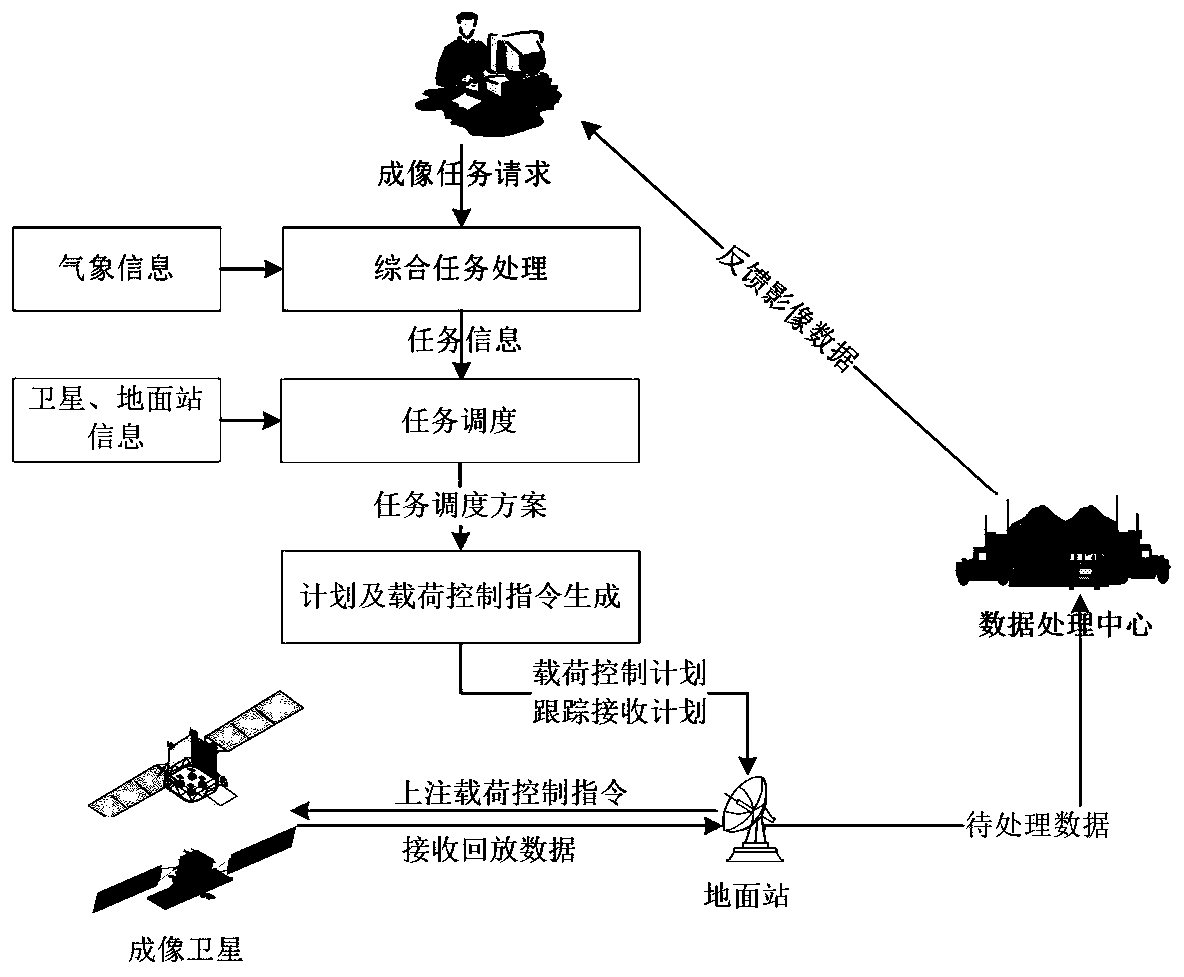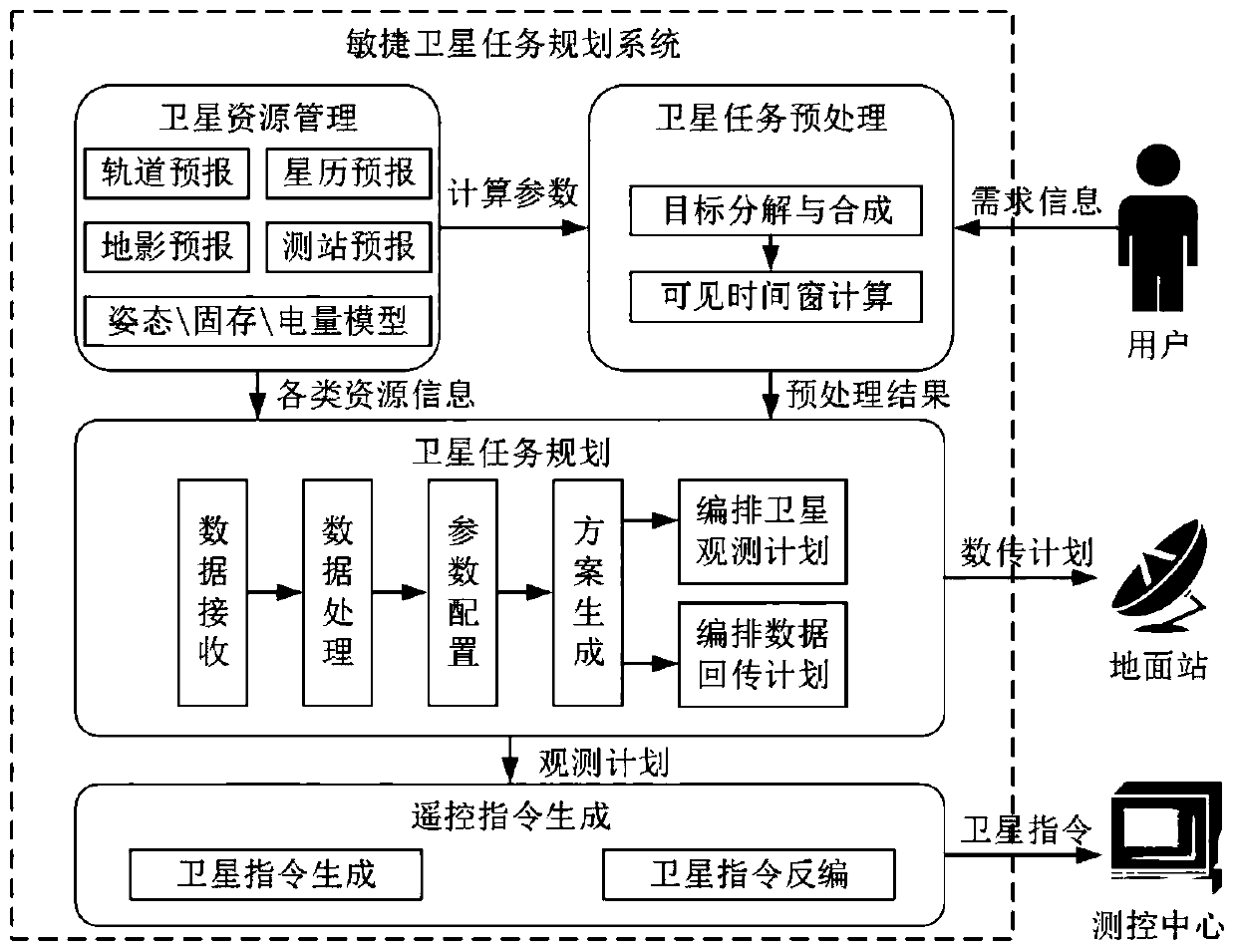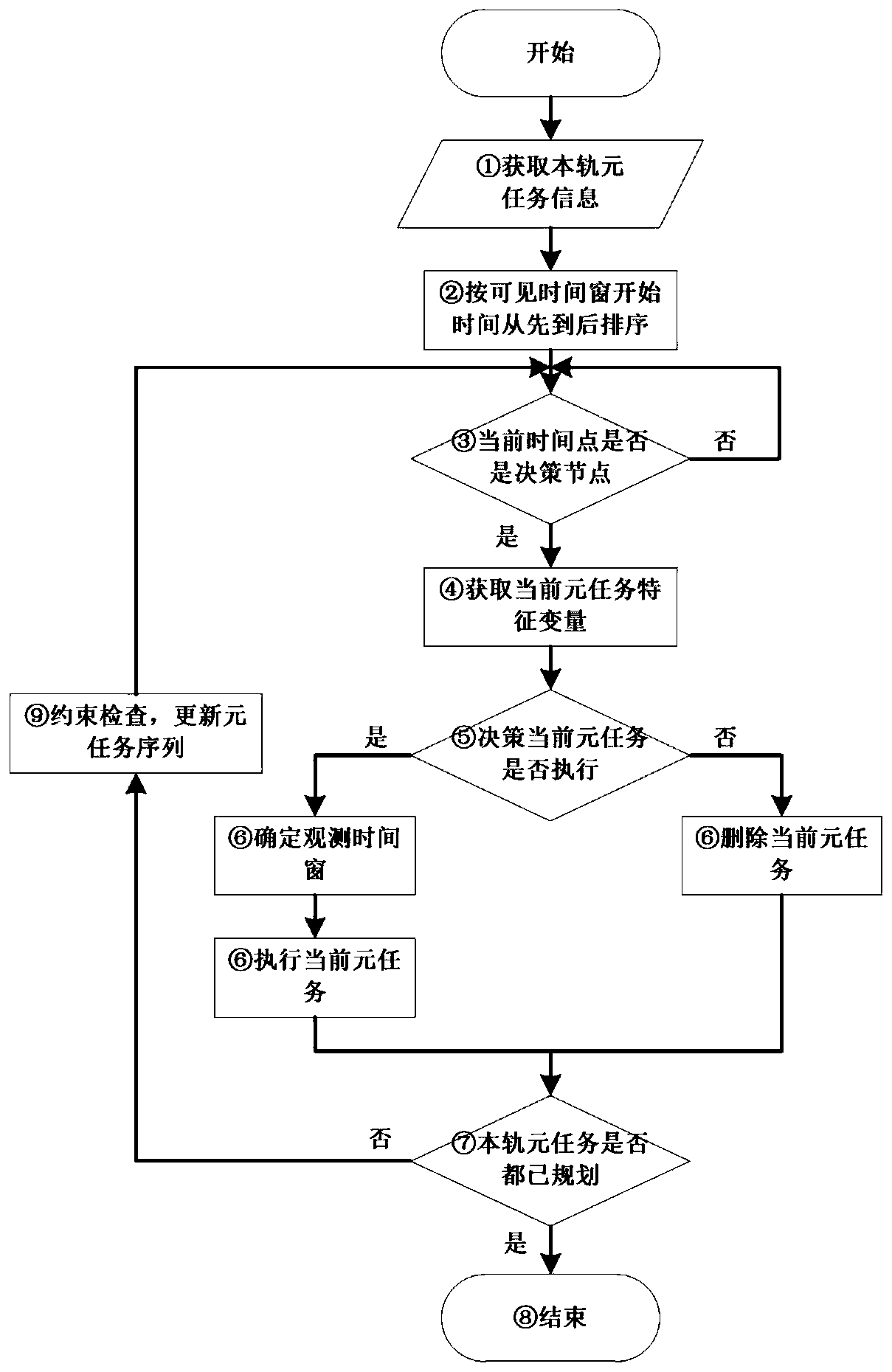Imaging satellite autonomous task planning method based on machine learning
An autonomous task and machine learning technology, applied in machine learning, instruments, computing models, etc., can solve the problems of long planning time, low task execution efficiency, and inability to real-time planning in satellite ground centralized management and control mode. The effect of high execution efficiency and guaranteed robustness
- Summary
- Abstract
- Description
- Claims
- Application Information
AI Technical Summary
Problems solved by technology
Method used
Image
Examples
Embodiment Construction
[0046] First of all, let’s clarify the concept. The meta-task referred to in the present invention refers to that since the satellite may be visible to the same target on multiple orbits, the completion of the observation of this target is called “task”, and each observation opportunity of this target is called “task”. It is called "meta task". For example, if a certain target is visible on the 3rd, 4th, and 9th orbits of the satellite, then each observation opportunity on the 3rd, 4th, and 9th orbits is called the "meta task" of this target, and one of them can be selected When any meta-task is executed, the observation of the target is completed. Each meta-task of the target has a one-to-one correspondence with its visible time window. To decide whether to execute a certain meta-task is to decide whether to arrange observations in its corresponding visible time window. Therefore, the autonomous mission planning problem for non-agile satellites can be expressed as solving th...
PUM
 Login to View More
Login to View More Abstract
Description
Claims
Application Information
 Login to View More
Login to View More - R&D
- Intellectual Property
- Life Sciences
- Materials
- Tech Scout
- Unparalleled Data Quality
- Higher Quality Content
- 60% Fewer Hallucinations
Browse by: Latest US Patents, China's latest patents, Technical Efficacy Thesaurus, Application Domain, Technology Topic, Popular Technical Reports.
© 2025 PatSnap. All rights reserved.Legal|Privacy policy|Modern Slavery Act Transparency Statement|Sitemap|About US| Contact US: help@patsnap.com



